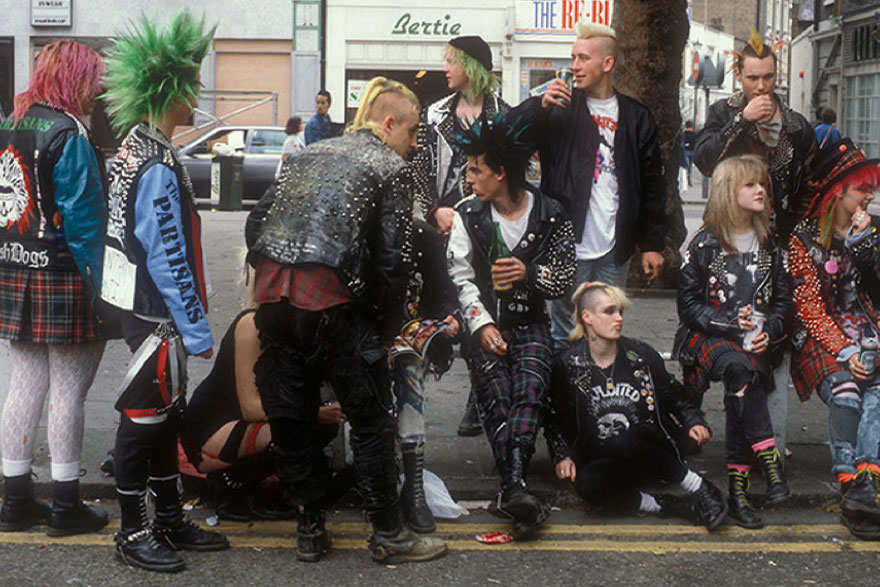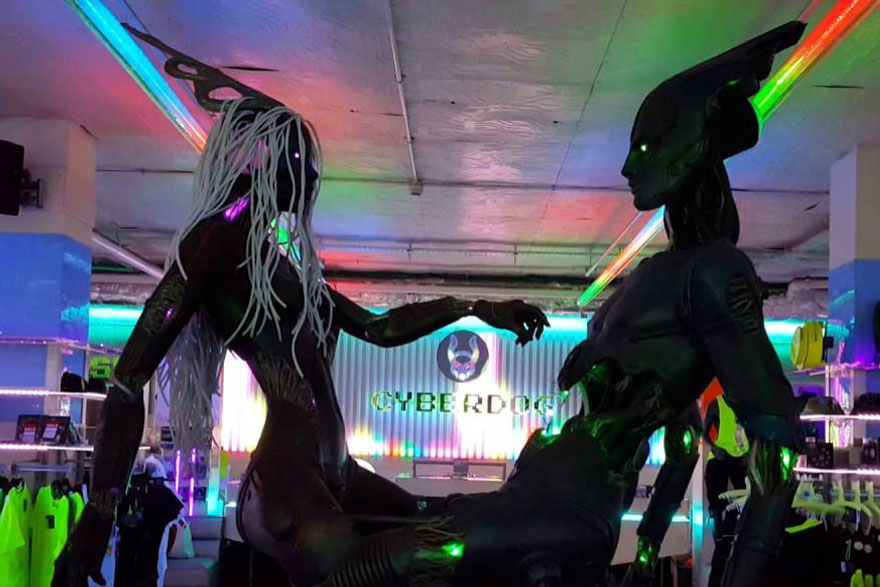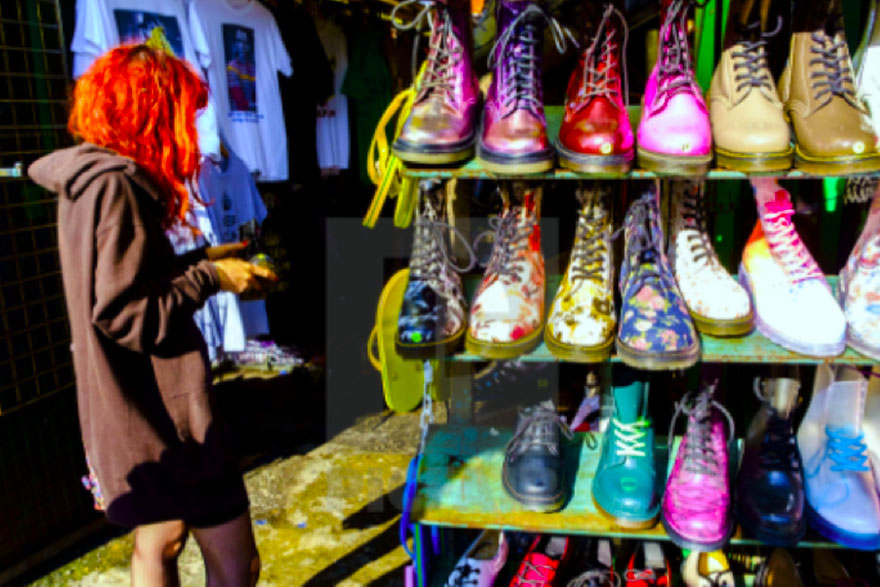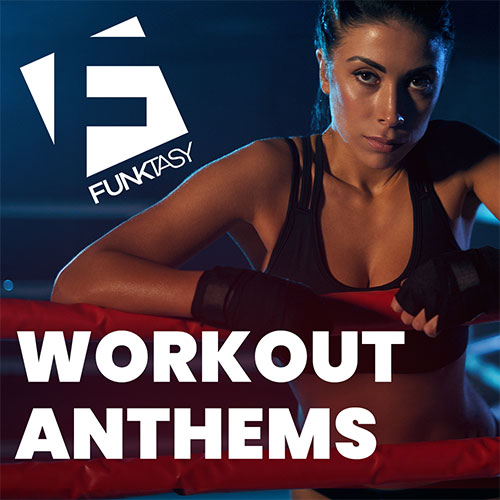London’s Camden Market has always been a hotbed of punk rock, fashion, and explosive culture.
World-Famous: The Development & Evolution Of Camden Market
1974 marked a change in London’s cultural landscape. London was on the precipice.
Only a year later, the Sex Pistols would form and go on to become one of the most notorious (and influential) bands in U.K history.
People were sick of “Seasons in the Sun”. They needed the media to represent their anger, their disillusionment with the government and with the world. In 1974, the class inequities in London were immense, the economy was plummeting, and the working class suffered as a result.
Art presented an opportunity for the working class to say “screw you” and have it actually hold weight. The first time Johny Rotten of the Sex Pistols went on TV and said “Fuck”, it caused national outrage. London was bursting with angst, demanding to be heard. Punk gave them a voice, gave them power. All they needed was a place where they could put themselves on display, a place where they belonged.
Weirdly enough, this came in the shape of a small arts and crafts fair in the backyard of Dingwalls, located in Camden, London.
What Is Camden Market? The Why, How, & When
While Camden may have started out as an opportunity for small arts and crafts vendors to set up shop, it soon evolved into a cultural hub for misfits. Punks, hippies, cyberpunks, and goths. Camden was and continues to be a place in which subcultures exist side by side.
A stallholder who operated in the 1970ss summed up Camden as a “mecca for rebels, artists and dropouts from around the world”.
In 1973, Dingwalls opened its doors in what would become the “Camden Locks” section of Camden market. Bill Fulford and Peter Wheeler bought the site in 1972 and transformed it from a timber yard into one of London’s first crafts and antiques markets by its 1973 opening.
Fulford and Wheeler had a dream of transforming Dingwalls into a workshop space for artists of all trades. After its opening in 1973, they knew their work was far from over.
Soon after it’s opening, Fulford and Wheeler received a phone call from wine merchant John Armit and business partner Tony Mackintosh. They pitched an idea to transform a section of Dingwalls into a dance hall.
Fulford and Wheeler agreed and the pub/dance hall opened soon thereafter, becoming one of the most up and coming venues in London. The pub stayed open until 2am, while most other local pubs closed at 11, drawing in a crowd of rebellious youth who came for the booze but stayed for the music.
Dingwalls has a rich musical history which includes hosting Blondie’s first ever U.K show, hosting some of the Clash, Pink Floyd and the Sex Pistols’ first concerts, and more.
While Dingwalls continue to be a prominent landmark within Camden Town, continuing to host shows by legendary acts, such as Radiohead, Noel Gallagher, The Strokes, Coldplay and the Red Hot Chili Peppers, the cultural landscape developed by Camden and Dingwall’s emergence in the 1970s reaches far beyond music.
What Is Fashion In Camden? Style, Looks, & Aesthetics
With Camden’s proper emergence came an influx and growth of sub and countercultures and with them, came the development of unique fashion styles which took off thanks to Camden’s creative hub.
Camden allowed unique and up-and-coming fashion trends to take off and thrive outside of the mainstream. While many early fashion styles centered around punk and related subcultures, Camden evolved with each new decade, embracing grunge, EDM/rave, Y2K, and many other cultural and style developments.
In 1994, amidst the rising popularity of grunge, a shop named “Cyberdog” emerged. This shop catered to nonconformists who aligned with EDM culture and music and who sought to express themselves and their interests through clothing and accessories.
Cyberdog began as a temporary stand in the “stables” portion of Camden Market but soon evolved into a permanent hotspot for clubbers, goths, and all rebellious youths.
The founders of the store, Terry Davy and Spiros Vlahos named the store after their pet Chihuahua “ChiChi the Cyberdog”, developing their original mascot as an artistic interpretation of their dog. Their goal? To create a store which captured the essence of club life from the moment you stepped in until the moment you left, bringing rave culture to Camden.
Having been established over 25 years ago, it is fair to say they have succeeded. They have since grown into a three-story store in Camden, in which guests are greeted by two 20 ft. Robot Alien figures and loud pulsing EDM music that can be heard throughout the market.

Punk Fashion Offers A Wide Range Of Looks And A Philosophy
Emerging in 1970’s New York, with bands, such as the Ramones taking off, punk music and culture soon made its way across the pond to the UK.
London youth embraced punk attire, colorful mohawks, thick black eyeliner, chains, leather jackets, political symbols emblazoned onto pins and patches, and of course, Doc Martens footwear.
Bands like the Sex Pistols popularized punk fashion & culture within the UK and established punk as a political genre. Something which had been lacking within the music/fashion of USA punk bands like the Ramones.
Camden became an area of congregation for punks in the 70s, largely influencing the fashion and culture of the market.
One by one, stalls started to pop up selling exclusively punk/goth clothing and apparel. Soon enough, the entire market was bursting with chaos. Camden was, and continues to be, a fashion hub for the unruly.

Cyberpunk & Rave Fashion In Camden Market And Beyond
House music started to gain traction in the 1980s amidst the mainstream focus on disco.
While large underground gatherings remained illegal, many DJs and artists continued to organize illicit raves in order to promote their music. By the 90s, house and EDM music had reached international recognition, with youth across the UK and Europe being largely responsible for its gain in popularity.
Amidst this surge in admiration of EDM music, multiple subcultures emerged.
EDM fashion became integral to the emerging rave scenes and with growing demand, came growing supply. It was due to these emerging subcultures and the fashion trends encompassed within them, such as neon and glow-in-the-dark clothing and accessories, bright latex clothing, hotpants, colorful hair, glow sticks, eccentric makeup, and face jewelry.
Since 1994, rave and EDM culture have gained even more traction, with many festivals such as Burning Man, Ultra, Tomorrowland and Creamfields having gained popularity worldwide.
There is a reason that Cyberdog has since evolved into one of the most frequented and well-established shops in all of Camden Market, ensuring that EDM fashion continues to thrive.

Grunge Fashion In Camden Market Is Also Worth A Mention
The culture and fashion of grunge music began to emerge in the 1990s in Washington State.
It first came to prominence within mainstream style and culture with Seattle bands such as Soundgarden, Nirvana, Mudhoney, The Melvins, Pearl Jam, and Alice in Chains gaining popularity.
Given their meteoric rise to fame, as well as the commonality of their hometowns, grunge became known as the “Seattle Sound” in the early 90s. Grunge, much like Punk, represented a rebellion in current mainstream culture.
A few years before though, the 1980s set the stage for how grunge was to form. The 1980s was marked, culturally, by hyper-produced pop music, ego-centric cock-rock, and economic/political unrest.
Many kids who had grown up in the era of the Cold War, D.A.R.E, a stock market collapse (and the biggest recession since the Great Depression) and the Iran-Contra affair, became teenagers by the early 90s.
Youths disillusioned by their parents’ support of Ronald Regan and conservative values, turned, once more to art as a means of rebellion. Grunge presented a counterculture answer to growing teenage angst. Similarly to punk, grunge was anti-establishment but, unlike punk, grunge grew out of disillusioned rather than raw anger.
Grunge was largely influenced by punk’s core messaging but lacked the same level of motivation.
Grunge was categorized, primarily, by the disillusionment of its creators. Its fashion reflected this. Grunge style often consisted of being at its core, lacking effort. This was a rebellion in of itself, coming out of the hyper-perfectionist era of 80s pop culture.
Grunge fashion varies but consists primarily of flannel, converse, messy makeup/hair, cardigans, plaid, ripped jeans, oversized and worn shirts, and clothing of all kinds.
Grunge fashion was born out of a desire for authenticity in a cultural landscape which was veering more and more towards impossible ideals of perfectionism. People wanted to feel as though they could relate to cultural icons. They wanted to find commonalities with their favourite musicians and, above all, they wanted a return to genuinity within pop culture, something which had not been achieved in the mainstream since punk rock.
Grunge accomplished this, and despite the apathetic approach to fashion, the subculture managed to form a distinct and lasting style.








